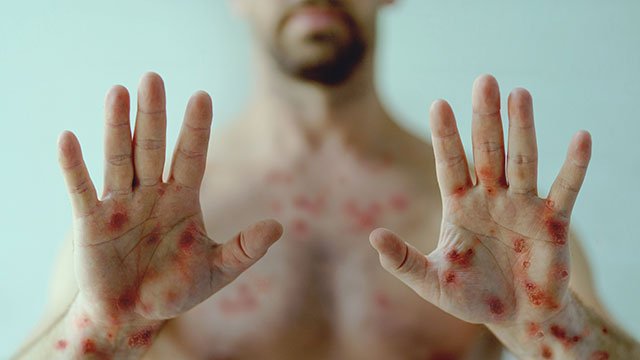Monkeypox (Mpox) is a disease caused by the Mpox virus that is similar to smallpox. It’s a rare disease that is prevalent in Africa, but cases have been reported in other parts of the world as well. The virus spreads primarily through contact with infected rodents, and in some cases, it can also spread through contact with an infected person. The symptoms of Mpox are flu-like, including fever, chills, headache, muscle aches, fatigue, and swollen lymph nodes. Later, a rash appears that can last for several weeks. There is no known cure for Mpox, but it usually resolves on its own.
What is Monkeypox?
Monkeypox (Mpox) is a rare disease caused by the Mpox virus, which is a member of the orthopoxvirus family, like the virus that causes smallpox. It was discovered in 1958 when two outbreaks of a pox-like disease occurred in groups of monkeys being used for research. There are two known types (clades) of Mpox virus, one that originated in Central Africa and one that originated in West Africa. The current (2022) world outbreak is caused by the less severe West African clade.

How common is Monkeypox?
Mpox is a rare disease, but the number of cases is increasing in Africa and other regions of the world. For decades, it was mainly seen in Africa, but since 2003, it has occasionally been found in other countries, including the United States. In 2021, a case of Mpox was found in a U.S. resident who had traveled from Nigeria to the United States, and in 2022, outbreaks were reported in regions outside of Africa, including Europe, the Americas, and Australia.
Who is at risk of getting Monkeypox?
Anyone can get Mpox, but most cases in Africa are among children under 15 years old. Outside of Africa, the disease appears to be more common in men who have sex with men, but there are numerous cases in people who don’t fall into that category.
Signs and Symptoms of Monkeypox
Early signs of Mpox include flu-like symptoms such as fever, chills, headache, muscle aches, fatigue, and swollen lymph nodes. After a few days, a rash often develops that starts as flat, red bumps and turns into blisters filled with pus. The blisters eventually crust over and fall off. The whole process can last two to four weeks. Not everyone with Mpox develops all the symptoms, and in some cases, people may not show many signs of infection.
How is Monkeypox transmitted?
Mpox is spread through contact with an infected person or animal. Animal-to-person transmission occurs through broken skin, like from bites or scratches, or through direct contact with an infected animal’s blood, bodily fluids, or pox lesions. Person-to-person spread occurs when you come in contact with the sores, scabs, respiratory droplets, or oral fluids of a person who is infected, usually through close, intimate situations like cuddling, kissing, or sex.
Diagnosing Monkey Pox (Mpox):
Symptoms and Tests Monkey pox, also known as Mpox, is a rare viral disease that can cause a rash and other flu-like symptoms. Due to its rarity, healthcare providers may initially suspect other viral illnesses, such as measles or chickenpox, before considering Mpox. However, swollen lymph nodes are a characteristic sign that distinguishes Mpox from other pox viruses.
To diagnose Mpox, a healthcare provider will take a tissue sample from an open sore or lesion, which will then undergo genetic fingerprinting through polymerase chain reaction (PCR) testing in a laboratory. Additionally, a blood sample may be required to check for the Mpox virus or antibodies produced by the immune system to fight it.
Curing Monkey Pox (Mpox):
Mpox is usually a self-limited disease with symptoms lasting for two to four weeks. Most people infected with Mpox recover without treatment. Healthcare providers will monitor the patient’s condition and treat the symptoms, administer antibiotics to manage secondary bacterial infections, and prevent dehydration.
Currently, there is no approved antiviral treatment for Mpox, although antiviral drugs may be helpful. Investigational antivirals that demonstrate activity against Mpox are available only for research purposes.
Preventing Monkey Pox (Mpox):
The most effective way to prevent the spread of Mpox is by reducing human contact with infected animals and limiting person-to-person transmission. Smallpox vaccine provides protection against Mpox, but its use is currently restricted to clinical trials. To avoid contracting the virus, one should:
- Avoid contact with infected animals, especially sick or dead ones.
- Avoid contact with materials that may have been contaminated with the virus, such as bedding.
- Thoroughly cook all food containing animal meat or parts.
- Wash hands frequently with soap and water.
- Avoid contact with individuals who may be infected.
- Practice safe sex, including the use of condoms and dental dams.
- Wear a face mask that covers the mouth and nose when around others.
- Clean and disinfect frequently touched surfaces.
- Use personal protective equipment (PPE) when caring for infected individuals.
Duration and Fatality of Monkey Pox (Mpox):
Mpox typically lasts two to four weeks, with healthcare providers monitoring patients until the rash resolves. While Mpox is less severe than smallpox, it can lead to complications such as pneumonia, encephalitis, or eye infections, which can be fatal.
Monkey Pox (Mpox) vs. Chickenpox:
Although both Monkey Pox and chickenpox cause skin rashes, they are caused by different viruses. Monkey Pox is an orthopoxvirus, while chickenpox is a herpes virus. Both viruses can spread through skin-to-skin contact or prolonged face-to-face interaction, but chickenpox is highly contagious and spreads more easily. People with Mpox are more likely to have swollen lymph nodes than people with chickenpox. The rashes also differ in that chickenpox rash appears in waves, while Mpox sores develop simultaneously. Chickenpox symptoms, including the rash, tend to improve within two weeks, while Mpox takes two to four weeks to resolve.
Mpox vs. smallpox
Monkeypox (Monkey Pox) and smallpox belong to the same orthopoxvirus family, but are caused by different viruses. While smallpox was eradicated globally by 1980 due to effective vaccination programs, Monkeypox (Monkey Pox) still remains a public health concern. Smallpox was highly contagious and more easily transmitted than Monkeypox (Monkey Pox). Although the symptoms of Monkeypox (Monkey Pox) resemble those of smallpox, they are generally less severe.
Final Words
The past couple of years have been a tremendous challenge due to the COVID-19 pandemic, which has drastically changed our way of life. However, even as we attempt to return to normal, reports in the media are now surfacing about monkey pox (Mpox) as a potential new danger. While monkey pox is a rare disease that has yet to be fully understood, it is known to be spread through close contact such as kissing and sexual activity. The most effective way to protect yourself is to avoid contact with infected individuals, frequently wash your hands, and wear a mask when indoors in crowded spaces. The early symptoms of monkey pox resemble those of the flu and may include fever, chills, and body aches, with a rash appearing a few days later.





